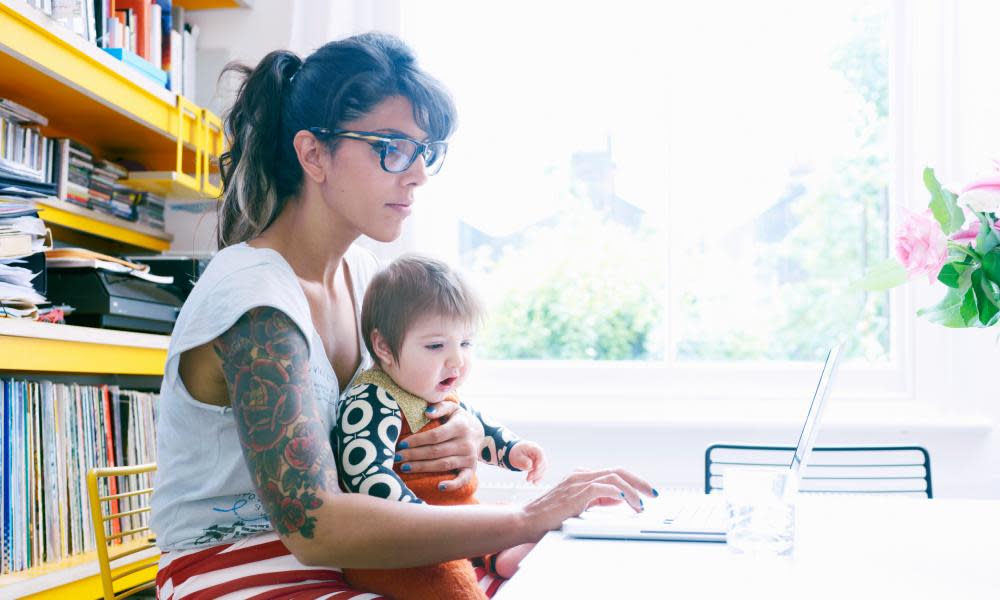A guide to maternity leave for freelancers and the self-employed

Hours that fit around school runs, being on hand to soothe a sick child and never missing a sports day – the benefits of being a freelance parent are far-reaching; no doubt one reason why there was a 70% increase in us from 2008-15.
However, when it comes to maternity or parental leave, the story is slightly different. Concerns about how to cope financially without statutory maternity pay constantly resurface among my freelancing networks.
When I decided to go freelance in 2015, starting a family was also on the radar, so I spent many a sleepless night trawling the HMRC website, making frantic calculations of what I’d be entitled to if I fell pregnant. Six months later – I did, and thanks to those research sessions I felt prepared for what was ahead. Financially, at least.
Know what you’re entitled to
In order to be eligible for the full maternity allowance of £140.98 per week (or 90% of your earnings – whichever’s lowest) for 39 weeks, you need to have been employed or self-employed for at least 26 of the 66 weeks prior to your due date (known as your “test period”). You also need to have earned at least £30 per week – and paid class two national insurance contributions – for at least 13 weeks of your test period. If you can’t meet this criteria, you may only be eligible for the lower rate of £27 per week.
Don’t panic if you don’t think you’re up-to-date with your national insurance contributions – you’ll have the opportunity to rectify this.
For instance, my baby was due in December 2016 and therefore my test period started in September 2015. When I applied for maternity allowance in October 2016, I had filed my most recent tax return (April 2015-16) but hadn’t paid it as it wasn’t due until January 2017. After submitting my claim I was contacted by the national insurance department and asked to make a payment to bring me up to date, which then allowed me to receive maternity allowance. So, it wasn’t a deal-breaker. It was, however, time-consuming. Freelancers with a limited company may be entitled to statutory maternity pay, depending on their particular circumstances.
Don’t put off applying
At 50 pages long, the maternity allowance claim form is something even the most organised among us could be forgiven for putting off. But take my advice – don’t.
Read it as soon as you can so you know what documents you need to source as part of the claim, such as a maternity certificate, and payslips for any time you were employed. Then send as soon as you’re 26 weeks pregnant to allow for the Department for Work and Pensions’ (DWP) five-week response time, plus leeway for any problems that arise.
I wasn’t so organised, so when – at 38 weeks pregnant – my application was denied because the DWP couldn’t find any record of my self-employment, I dissolved in a state of panic. After two hours on the phone, I discovered there’d been a problem with my tax return, and I needed to re-submit it, then ask the DWP to look at my application again. While it didn’t take the full five weeks to respond this time, it still wasn’t until I returned from the hospital after having my son that my application had been approved.
Keeping afloat
Self-employed mums are allowed to work for 10 “keeping in touch” (KIT) days and still receive maternity allowance – useful if you’re (understandably) struggling to get by on £140.98 per week.
DWP guidelines state that any amount of work completed in a single day counts as one day’s work, and Maternity Action recommends keeping a record of exactly how and when you worked during maternity leave. However, you’re not actually required to provide any proof of earnings for these KIT days. All the DWP asks is that if you decide to work more than 10 days, you cancel your maternity allowance.
Interestingly, if you do stop your maternity allowance early, but decide you’ve made a mistake, as long as you’re within the 39 weeks, you’re entitled to contact DWP and ask them to pay the remaining maternity allowance balance.
Confused? Well, this is what I did: When my baby was three months old I completed 10 days of editing work for a regular client, while continuing to receive maternity allowance. I then decided to cancel my maternity allowance 12 weeks before it was due to end, in order that my partner could take paid shared parental leave instead (only one partner can receive maternity/parental pay at one time).
While this was primarily to allow him time as primary carer, it also meant I’ve been able to return to work – and remind those clients I’m still here – after just six months. Sure, working in the spare room has its challenges, but when I can pop downstairs for cuddles on demand, it’s a reminder that freelancing as a mum, even in these early days, definitely has its benefits.
Looking for a job? Browse Guardian Jobs or sign up to Guardian Careers for the latest job vacancies and career advice

 Yahoo News
Yahoo News 
